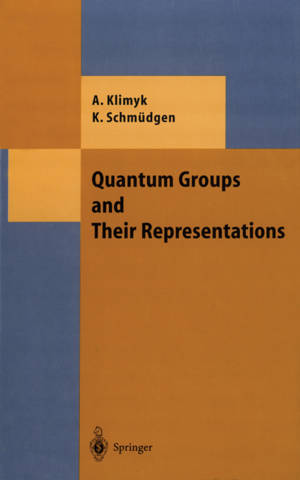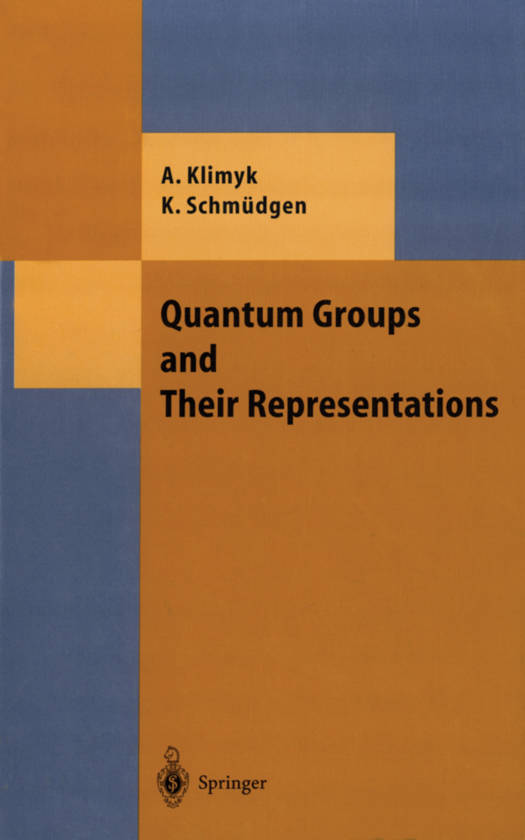
Door een staking bij bpost kan je online bestelling op dit moment iets langer onderweg zijn dan voorzien. Dringend iets nodig? Onze winkels ontvangen jou met open armen!
- Afhalen na 1 uur in een winkel met voorraad
- Gratis thuislevering in België vanaf € 30
- Ruim aanbod met 7 miljoen producten
Door een staking bij bpost kan je online bestelling op dit moment iets langer onderweg zijn dan voorzien. Dringend iets nodig? Onze winkels ontvangen jou met open armen!
- Afhalen na 1 uur in een winkel met voorraad
- Gratis thuislevering in België vanaf € 30
- Ruim aanbod met 7 miljoen producten
Zoeken
Omschrijving
The invention of quantum groups is one of the outstanding achievements of mathematical physics and mathematics in the late twentieth century. The birth of the new theory and its rapid development are results of a strong interrelation between mathematics and physics. Quantu groups arose in the work of L.D. Faddeev and the Leningrad school on the inverse scattering method in order to solve integrable models. The algebra Uq(sh) appeared first in 1981 in a paper by P.P. Kulish and N.Yu. Reshetikhin on the study of integrable XYZ models with highest spin. Its Hopf algebra structure was discovered later by E.K. Sklyanin. A major event was the discovery by V.G. Drinfeld and M. Jimbo around 1985 of a class of Hopf algebras which can be considered as one-parameter deforma- tions of universal enveloping algebras of semisimple complex Lie algebras. These Hopf algebras will be called Drinfeld-Jimbo algebras in this book. Al- most simultaneously, S.L. Woronowicz invented the quantum group SUq(2) and developed his theory of compact quantum matrix groups. An algebraic approach to quantized coordinate algebras was given about this time by Yu.I. Manin.
Specificaties
Betrokkenen
- Auteur(s):
- Uitgeverij:
Inhoud
- Aantal bladzijden:
- 552
- Taal:
- Engels
- Reeks:
Eigenschappen
- Productcode (EAN):
- 9783642646010
- Verschijningsdatum:
- 14/12/2011
- Uitvoering:
- Paperback
- Formaat:
- Trade paperback (VS)
- Afmetingen:
- 156 mm x 234 mm
- Gewicht:
- 793 g

Alleen bij Standaard Boekhandel
+ 316 punten op je klantenkaart van Standaard Boekhandel
Beoordelingen
We publiceren alleen reviews die voldoen aan de voorwaarden voor reviews. Bekijk onze voorwaarden voor reviews.











